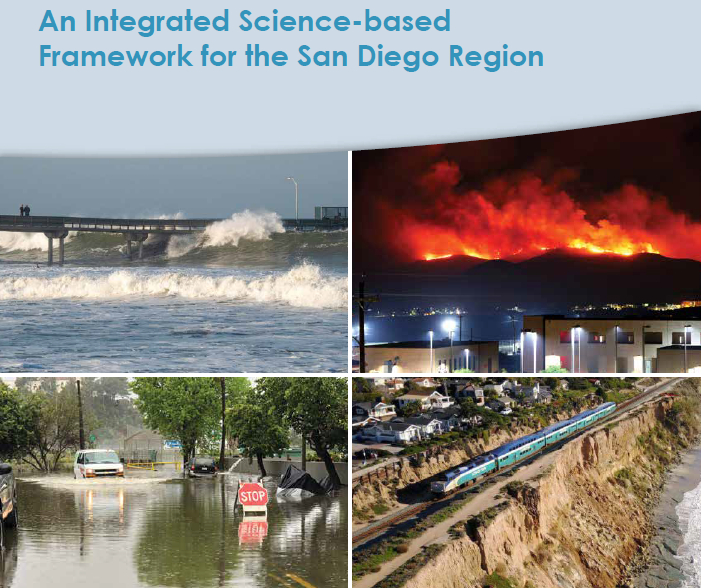A team of experts representing the American Planning Association (APA), Scripps Institution of Oceanography at UC San Diego, and San Diego State University have released a new report, entitled Collaborative Planning for Climate Resilience, that analyzes the planning needed to address climate change impacts in the San Diego region. Report authors also designed a model for coordination among public agencies, research institutions, non-governmental organizations, and other stakeholders — one that can be replicated in other regions. The report emphasizes the importance of integrating climate justice in such plans, paying attention to disadvantaged communities that are particularly susceptible to climate change impacts.
Among the key findings:
- The San Diego region is susceptible to a host of threats to its quality of life and the natural environment because of climate change.
- Science-based projections indicate that ambient temperatures will increase, sea level will rise, and precipitation patterns will change. The most severe impacts will be caused by extreme weather conditions leading to greater risks of wildfire, extreme heat, flooding, and erosion. The possibility that extreme events will co-occur or happen sequentially will increase, exacerbating the impacts.
- These conditions will have major impacts on our infrastructure, natural resources, coastal resources, and public health and safety. These threats take on a special urgency for disadvantaged communities that are particularly vulnerable due to their locations and their past deprivation of protective infrastructure.
- By relying on a framework for climate resilience planning that makes use of existing regional planning efforts and local government general plans, public agencies in the San Diego region can more effectively meet the climate resilience challenges.
- For example, the County of San Diego is already updating its Multi-jurisdictional Hazard Mitigation Plan and is creating a new Climate Change and Public Health Plan. These plans will identify specific adaptation strategies and actions that can be implemented at the regional level, and also at the local level through updates to local General Plan Safety Elements and Environmental Justice Elements. Similarly, the San Diego County Water Authority’s Integrated Regional Water Management Program is being updated to address major climate issues like the wildfire / water nexus, and the San Diego Association of Governments (SANDAG) draft 2021 Regional Plan addresses climate change impacts affecting the region’s transportation and other critical infrastructure. Implementation of these plans will require ongoing collaboration with local jurisdictions.
- These efforts will ensure that critical needs of historically disadvantaged communities and communities that have been subject to discriminatory practices, including communities of color, low-income communities, tribal communities, and certain rural areas, can be effectively addressed.
- Although climate adaptation and resilience planning already are underway in San Diego, the threats associated with climate change make it increasingly important to design these efforts in ways that bring scientists, planners, practitioners, and community representatives together in planning processes.
- A cross-jurisdictional, interdisciplinary, collaborative approach leads to science-based and cost-effective strategies and actions that can be implemented in a timely manner. Groups such as the Climate Science Alliance, Connecting Wildlands and Communities, the San Diego Regional Climate Collaborative, and SANDAG working groups already are working with local governments on strategies to conserve natural resources and protect communities. Strong partnerships with state, federal, tribal, and cross-border partners also are needed.
The report is a joint product of APA’s Regional and Intergovernmental Planning Division (RIPD) and the California-Nevada Climate Applications Program (CNAP), a NOAA Program, based at Scripps Oceanography. Co-lead authors are Robert Leiter, FAICP, and Cary Lowe, Ph.D., AICP, on behalf of APA, and Julie Kalansky, Ph.D., on behalf of Scripps. A team of nine other planning and scientific experts contributed to the report, along with twenty-four external reviewers.


